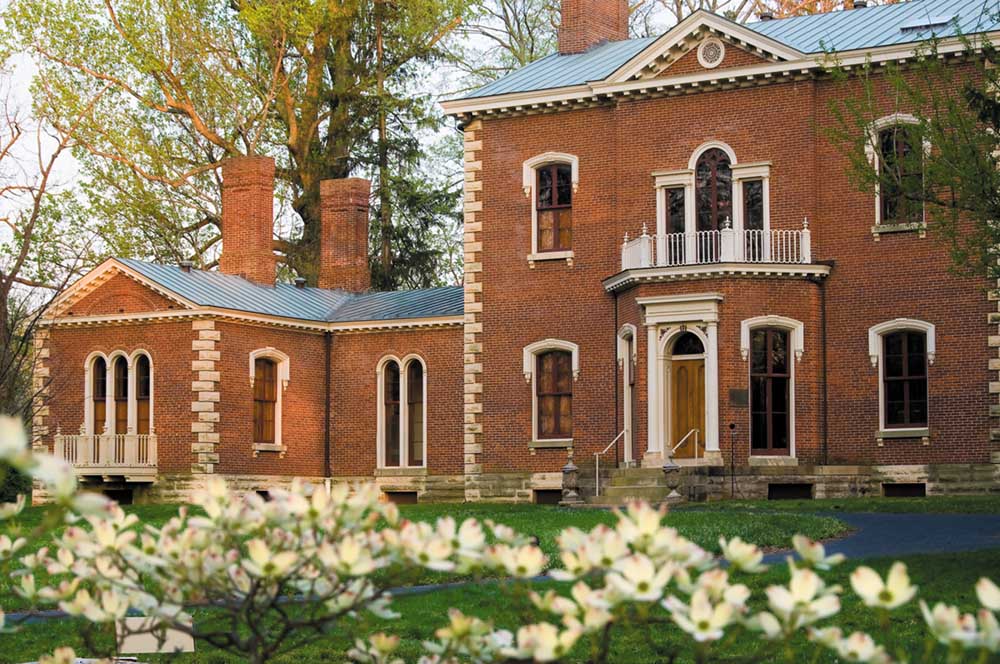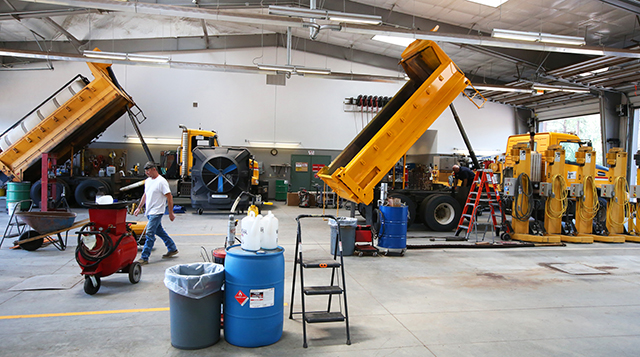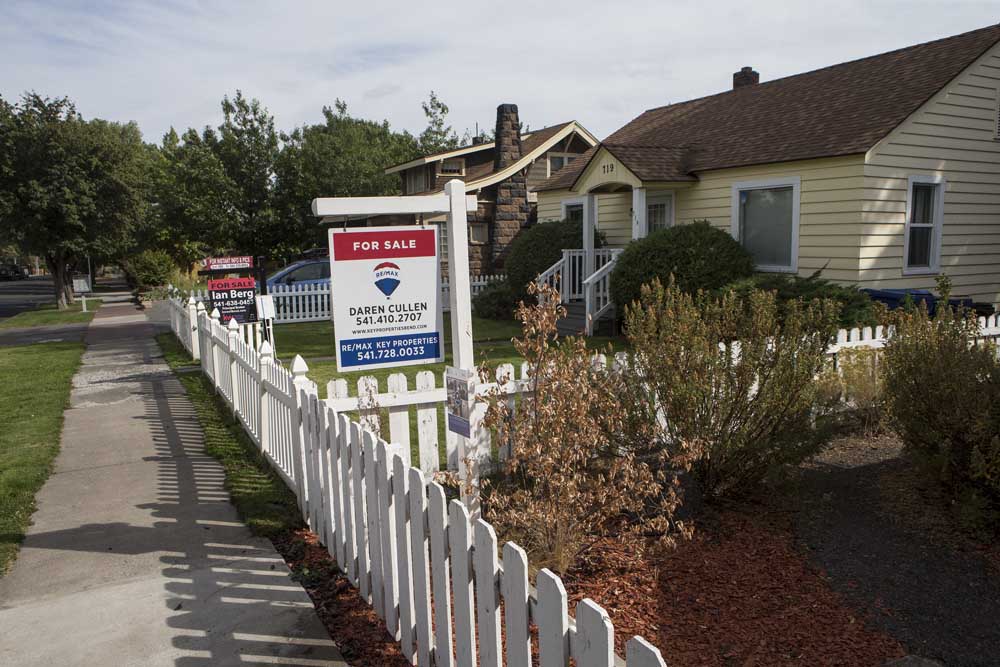Lexington offers more than ‘Horses, History and Heritage’
Published 12:00 am Sunday, April 10, 2016

- Jeff Rogers / For VisitLEXAshland, the Henry Clay Estate, is one of many historic buildings in the city of Lexington.
LEXINGTON, Ky. —
If you’re going to spend any time in this gracious city in Kentucky’s scenic Bluegrass, know that it’s less important to mind your P’s and Q’s than to brush up on your B’s: betting (know the difference between a trifecta and an exacta); bourbon (Jack Daniel’s isn’t one) and basketball (Kentucky blue is bluer than Duke or North Carolina blue.) In the Bluegrass, it’s the B’s that count.
Trending
At first glance, Lexington appears a genteel belle, as befitting her provenance. Founded in 1776, it quickly became a center of culture on the frontier, being the site of several “firsts” — the first university west of the Allegheny Mountains (Transylvania); the first site of a commercial vineyard planted in the United States (First Vineyards, just south of town), and the first U.S. performance of a Beethoven symphony (Number 7). For this and for its bevy of distinguished citizens, including Henry Clay and Mary Todd Lincoln, it became known as the “Athens of the West.” But look beneath those starched crinolines, and you’ll see the belle has a naughty side. Just ask those working their way through the more than 500 bourbons at the Bluegrass Tavern, or the regulars at Belle’s Cocktail House, named for notorious Lexington madam, Belle Brezing, the real-life inspiration for Belle Watling in “Gone With the Wind.”
She may tease visitors with her subtle charms, but she’s not entirely without guile. Downtown banners testify to Lexington’s Top 10 ranking in a number of categories, from “Best Place to Start a Small Business” to “Number of Residents with Advanced Degrees.” Most know Lexington is synonymous with thoroughbreds — and not just the four-legged variety that have made it the “Horse Capital of the World.” There is also the two-legged variety — the eight-time national champion University of Kentucky Wildcats basketball team, whose besotted fans make up the Big Blue Nation.
Small city, big tradition
For a mid-sized Southern city, Lexington packs a mighty wallop, though wearing a velvet glove while doing so.
“The thing that makes Lexington so interesting is that it’s a mash-up between blueblood and bohemian,” says its mayor, Jim Gray, whose elegant townhouse in a historic neighborhood is filled not with antiques as one might expect, but with cutting edge modern art.
“Tradition here has a very strong pull, but we’re not bound by it,” Gray says.
Trending
Tradition, however, is a major reason visitors flock here — that and the fact that Lexington offers the traveling public a tremendous bang for a fairly stretchable buck.
“Our motto is Horses, History and Heritage,” says Mary Quinn Ramer, president of VisitLex, the city’s Convention and Visitors Bureau. “We have it all.”
While, at various times, other cities have tried to co-opt Lexington’s place in the horse hierarchy, everyone knows where the Big Boys go after their racing careers end. The country’s favorite horse, American Pharoah, didn’t go off to Florida, Maryland or California after capturing the Triple Crown and the Breeders’ Cup (held right here in Lexington last October.) You’ll find him doing his studly duty at Ashford Stud Farm in the lush countryside just outside of Lexington. Other legendary farms such as Calumet, Winstar and Gainesway are among the 450 surrounding the city, testifying to the importance of the horse.
History
As for history, there’s been a lot of it during the city’s 240-year existence. Daniel Boone erected his namesake fort, Boonesborough, on the Kentucky River 24 miles from here; the Marquis de Lafayette’s winemaker planted the first commercial vineyard in the United States just south of Lexington (the current First Vineyard occupies the exact spot), and a young Abraham Lincoln took as his bride, Mary Todd, the daughter of a prominent Lexington family (her modest two-story girlhood home is the first house museum in the U.S. to honor a first lady).
To get a sense of Lexington’s early history, stroll through Gratz Park, a leafy enclave a few blocks north of downtown and the city’s oldest neighborhood. The colorful Federal-style row houses are the Bluegrass equivalent of Rainbow Row in Charleston, South Carolina.
Hopemont, built in 1814 by John Wesley Hunt, Kentucky’s first millionaire, was also home to Thomas Hunt Morgan, the first Kentuckian to win a Nobel Prize. Its most famous resident, however, was Confederate Gen. John Hunt Morgan, who, depending on the sympathies of those describing him, was known as the Thunderbolt of the Confederacy or the King of Horse Thieves. A figure of epic proportions, Morgan reputedly once rode his mare Black Bess through the front door of the house, leaned from the saddle to kiss his mother and made his escape out the back door, Yankees in hot pursuit.
A block to the south of Gratz Park is the former law office of famed statesman Henry Clay. Clay, who served as congressman, senator, speaker of the House, secretary of state and three-time presidential candidate, is arguably Lexington’s most distinguished historic figure — a man that Lincoln called his “beau ideal.” Visitors can tour Clay’s estate, Ashland, a few miles east of downtown. His friend Benjamin Latrobe, architect of the U.S. Capitol, designed the two wings on either side of the original house, although its finest feature is thought to be the octagonal library with its circular rotunda. Take a walk in Ashland’s formal parterre gardens; sniff the roses and the box yews and get an understanding of why Clay retreated to Ashland to breed horses when he needed to escape the harsh political realities of the time.
Bourbon
It seems all that talk about horses and history was thirsty work, and in 1789, a Baptist preacher, Elijah Craig, allegedly came up with the perfect tonic — bourbon. The calcareous limestone shelf beneath the fertile soil and the clear water leached from it that is so instrumental in producing quality horses proved equally conducive to quality bourbon. Today, 95 percent of the world’s bourbon comes from within a 75-mile radius of Lexington.
The closest distillery to Lexington is Woodford Reserve, about a 25-minute drive from downtown. The National Historic Landmark on picturesque Glen’s Creek in the midst of beautiful horse country is the oldest and smallest of the distilleries on the state’s Bourbon Trail. Knowing a good thing when they tasted it, many Lexington chefs have incorporated bourbon into their signature dishes — from the bourbon maple glazed salmon at Cole’s 735 Main and bourbon fried chicken at Azur to the Lump Crab Hoe Cakes with Bourbon Sorghum Butter at Distilled at the Gratz Park Inn and the bourbon-citrus brined pork chops at Nick Ryan’s.








